"Echoes of Injustice brings together the work of three contemporary photographers—Renee Billingslea, Jerry Takigawa, and Dean K. Terasaki—who explore the traumatic legacy and lasting reverberations of the World War II incarceration of Japanese Americans. Through deeply personal and visually layered approaches, each artist offers a distinct perspective on this dark chapter of U.S. history, urging us to confront what has been forgotten, concealed, or left unresolved." - Samantha Johnston, Executive Director & Curator of the Colorado Photographic Arts Center.
Read the full Curator's Statement and more about this exhibit on CPAC's website.
The exhibit runs from May 9 - June 21, 2025.
This curated list represents a small selection of titles Denver Public Library owns on this topic. You can find more of our collection, including historical and archival materials in our Special Collections and Archives, by searching our catalog or asking our staff for assistance.
Adult Books | Teen Books | Movies | Music

A photographic collection of arts and crafts made in the Japanese American internment camps during World War II, along with a historical overview of the camps.
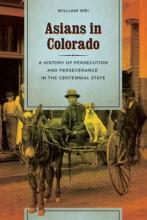
Offering a fresh perspective on how cycles of persecution are repeated, Wei reveals how the treatment of Asian Americans resonates with the experiences of other marginalized groups in American society. His study sheds light not only on the Asian American experience but also on the development of Colorado and the greater American West.

A memoir by a Nisei member of the Fair Play Committee that was organized at the Heart Mountain War Relocation Authority camp. A book-length, insider's perspective, account by a Nisei World War II draft resister. A rare acknowledgment of dissension within the resistance movement, between the young men who went to prison, and older leaders.
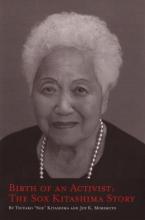
Birth of an Activist tells the inspiring story of Tsuyako "Sox" Kitashima, a California-born, Japanese American woman whose name became synonymous with the redress and reparations campaign for Japanese Americans wrongfully incarcerated during World War II. From her childhood through World War II and the post-war years, to her transformation into a community leader and activist, Sox Kitashima's life journey will touch all readers.

Based on a true crime that terrorized the resettled Japanese American community in Chicago, and inspired by historical events, Clark and Division infuses an atmospheric and heartbreakingly real crime fiction plot with rich period details and delicately wrought personal stories Naomi Hirahara has gleaned from thirty years of research and archival work in Japanese American history.

From the acclaimed and award-winning author of The Hunger and The Deep comes a new psychological and supernatural twist on the horrors of the Japanese American internment camps in World War II.
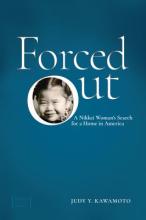
"Voluntary evacuation," a little-known Japanese American experience during World War II with roughly 120,000 people forced from their homes by Executive Order 9066. Around 5,000 escaped. Recounting her family's flight from home and the influence of those experiences. Like many families who lost everything and started over in hostile environments.
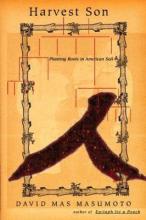
By knitting together past and future, Masumoto achieves a rare and essential harmony - holding on to what matters, despite the pressures of time and change.
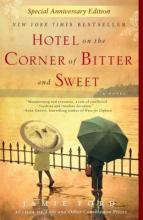
In 1986, Henry Lee joins a crowd outside the Panama Hotel, once the gateway to Seattle's Japantown. It has been boarded up for decades, but now the new owner has discovered the belongings of Japanese families who were sent to internment camps during World War II. Henry, a Chinese American, remembers a young Japanese American girl from his childhood in the 1940s—Keiko Okabe. Now, forty years later, Henry explores the hotel's basement. His search will take him on a journey to revisit the sacrifices he has made for family, for love, for country.
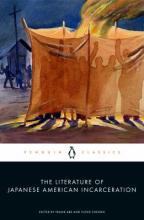
From nearly seventy selections of fiction, poetry, essays, memoirs, and letters emerges a shared story of the struggle to retain personal integrity in the face of increasing dehumanization. The selections favor the pointed over the poignant, and the unknown over the familiar, with several new translations among previously unseen works that have been long overlooked on the shelf, buried in the archives, or languished unread in the Japanese language.

Ichihashi's writings convey to us, as no other account does, the cut and drift and anxiety of everyday existence in the camps. We experience the grinding tedium and frequently harsh conditions of daily life and the ever-present uncertainty, suspicion, and even fear that permeated the internees' existence. Equally knowledgeable about American and Japanese ways, Ichihashi offers valuable insights into administrators (ironically, one camp director had been his student at Stanford) as well as internees - both Issei (immigrants) and Nisei (American-born). His documentation of meetings and discussions with other internees introduces us to a rich gallery of personalities and viewpoints, helping us to see beyond what otherwise would seem an undifferentiated and impersonal mass of people.
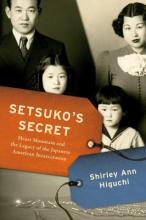
As children, Shirley Ann Higuchi and her brothers knew Heart Mountain only as the place their parents met, imagining it as a great Stardust Ballroom in rural Wyoming. As they grew older, they would come to recognize the name as a source of great sadness and shame for their older family members, part of the generation of Japanese Americans forced into the hastily built concentration camp in the aftermath of Executive Order 9066. Only after a serious cancer diagnosis did Shirley's mother, Setsuko, share her vision for a museum at the site of the former camp, where she had been donating funds and volunteering in secret for many years. After Setsuko's death, Shirley skeptically accepted an invitation to visit the site, a journey that would forever change her life and introduce her to a part of her mother she never knew.

During World War II, a family finds life turned upside-down when the government opens a Japanese internment camp in their small Colorado town. After a young girl is murdered, all eyes turn to the newcomers. Rennie has just turned thirteen, and until this time, life has been predictable and fair. But the winds of change are coming and with them, a shift in her perspective and a discovery of secrets that can destroy even the most sacred things. Part thriller, part historical novel, Tallgrass is a riveting exploration of the darkest—and best—parts of the human heart.

Utilizing narrative prose, impressionistic poetry, and retellings of Japanese myth and legend, George Uba's memoir examines post-internment life and generational trauma among Nisei and Sansei across the United States.

In five chapters, each flawlessly executed from a different point of view "the mother receiving the order to evacuate; the daughter on the long train ride to the camp; the son in the desert encampment; the family's return to their home; and the bitter release of the father after more than four years in captivity" she has created a small tour de force, a novel of unrelenting economy and suppressed emotion.

With the recent death of her mother and the possibility of her family losing their farm, Samantha Sakamoto does not have space in her life for dreams, but when faced with prejudice and violence in her Washington State community after Pearl Harbor, she is determined to use her photography to document the bigotry around her.
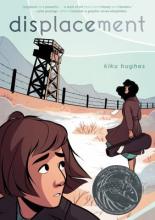
Kiku is on vacation in San Francisco when suddenly she finds herself displaced to the 1940s Japanese-American internment camp that her late grandmother, Ernestina, was forcibly relocated to during World War II. These displacements keep occurring until Kiku finds herself stuck back in time. Living alongside her young grandmother and other Japanese-American citizens in internment camps, Kiku gets the education she never received in history class. She witnesses the lives of Japanese-Americans who were denied their civil liberties and suffered greatly, but managed to cultivate community and commit acts of resistance in order to survive.
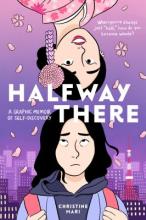
A Japanese American college student reconnects with her roots in Tokyo, Japan, while wrestling with feelings of loneliness, depression, and cultural identity confusion.
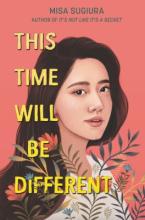
Katsuyamas never quit -- but seventeen-year-old CJ doesn't even know where to start. She's never lived up to her mom's type A ambition, and she's perfectly happy just helping her aunt, Hannah, at their family's flower shop. She doesn't buy into Hannah's romantic ideas about flowers and their hidden meanings, but when it comes to arranging the perfect bouquet, CJ discovers a knack she never knew she had. A skill she might even be proud of. Then her mom decides to sell the shop -- to the family who swindled CJ's grandparents when thousands of Japanese Americans were sent to internment camps during WWII. Soon a rift threatens to splinter CJ's family, friends, and their entire Northern California community; and for the first time, CJ has found something she wants to fight for.

For fourteen-year-old budding artist Minoru Ito, her two brothers, her friends, and the other members of the Japanese-American community in southern California, the three months since Pearl Harbor was attacked have become a waking nightmare: attacked, spat on, and abused with no way to retaliate--and now things are about to get worse, their lives forever changed by the mass incarcerations in the relocation camps.
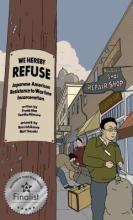
Three Japanese American individuals with different beliefs and backgrounds decided to resist imprisonment by the United States government during World War II in different ways. Jim Akutsu, considered by some to be the inspiration for John Okada's No-No Boy, resisted the draft and argued that he had no obligation to serve the US military because he was classified as an enemy alien. Hiroshi Kashiwagi renounced his United States citizenship and refused to fill out the "loyalty questionnaire" required by the US government. He and his family were segregated by the government and ostracized by the Japanese American community for being "disloyal." And Mitsuye Endo became a reluctant but willing plaintiff in a Supreme Court case that was eventually decided in her favor.

An oral history about Japanese internment during World War II, after the bombing of Pearl Harbor, from the perspective of children and young people affected.
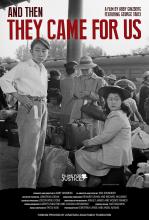
In 1942, Executive Order 9066 paved the way for the profound violation of constitutional rights that resulted in the forced incarceration of 120,000 Japanese Americans. Featuring George Takei and many others who were incarcerated, as well as newly rediscovered photographs of Dorothea Lange. And Then They Came for Us brings history into the present, retelling this difficult story and following Japanese Americans as they speak out against the Muslim registry and travel ban.
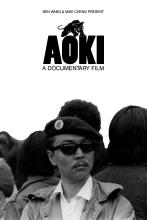
Aoki chronicles the life of Richard Aoki (1938-2009), a third-generation Japanese American who became one of the founding members of the Black Panther Party. Viewers will learn about Richard's childhood in a WWII Japanese American concentration camp, growing up in West Oakland, and serving eight years in the U.S. military. AOKI highlights how Richard's leadership also made a significant impact on individuals and groups in the contemporary Asian American Movement. Richard's contributions to the groundbreaking organization Asian American Political Alliance (AAPA) and its involvement in the Third World Liberation Front (TWLF) student strike led to the formation of ethnic studies at U.C. Berkeley.
Only available to stream on Kanopy.
The story of the internment of Japanese-Americans at Camp Amache in southeastern Colorado during World War II, includes interviews with some of those encamped and their family members.
Only available to view at the Central Library's Special Collections and Archives. Go to this page to learn more about visiting us.
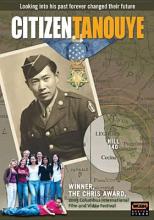
Eight ethnically diverse high school students from Torrance, California bring history to life as they research Technical Sergeant Ted Tanouye, a graduate of their high school who was posthumously awarded the Medal of Honor for his service in WWII. Through their research of Citizen Tanouye, the students not only discover the impact of the war on their city, but also draws attention to the civil rights abuses of WWII-era America.
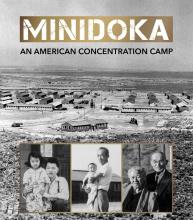
Learn about the incarceration of Japanese Americans during World War II, the experiences of survivors and their descendants, and the site's relevance to the complicated issues Americans face today.
Available to stream freely online from the National Park Service.

Like many innocent Japanese Americans released from WWII forced incarceration camps, the young Omori sisters did their best to erase the memories and scars of life under confinement. Fifty years later acclaimed filmmaker Emiko Omori asks her older sister and other detainees to reflect on the personal and political consequences of the camps. Visually stunning and emotionally compelling, Rabbit in the Moon uses eye witness accounts to examine issues that created deep rifts within the community, reveals the racist subtext of the loyalty questionnaire, and the absurdity of the military draft within the camps. Omori renders a poetic and illuminating picture of a deeply troubling chapter in American history.
Only available to stream on Kanopy.
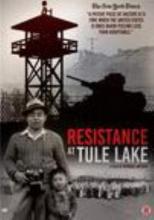
The long-suppressed story of 12,000 Japanese Americans who dared to resist the US government's program of mass incarceration during World War II.

Inspired by the childhood of George Takei, Allegiance is a moving and uplifting story of love, war, and heroism set during the Japanese American internment of World War II. It follows the story of the Kimura family in the weeks and years after the attack on Pearl Harbor, as they are relocated from their farm in Salinas, California to the Heart Mountain internment camp in the rural plains of Wyoming.

Omoiyari is Kishi Bashi’s fourth album following the acclaimed 151a (2012), Lighght (2014), and Sonderlust (2016), which have garnered serious acclaim from outlets including NPR Music, The Wall Street Journal and The Guardian, and his most important yet. Many of the songs were initially inspired by history and oppression, and he deftly weaves tales of love, loss, and wanting to connect listeners to the past. Channeling the hard-learned lessons of history, Omoiyari is an uncompromising musical statement on the turbulent sociopolitical atmosphere of present-day America.